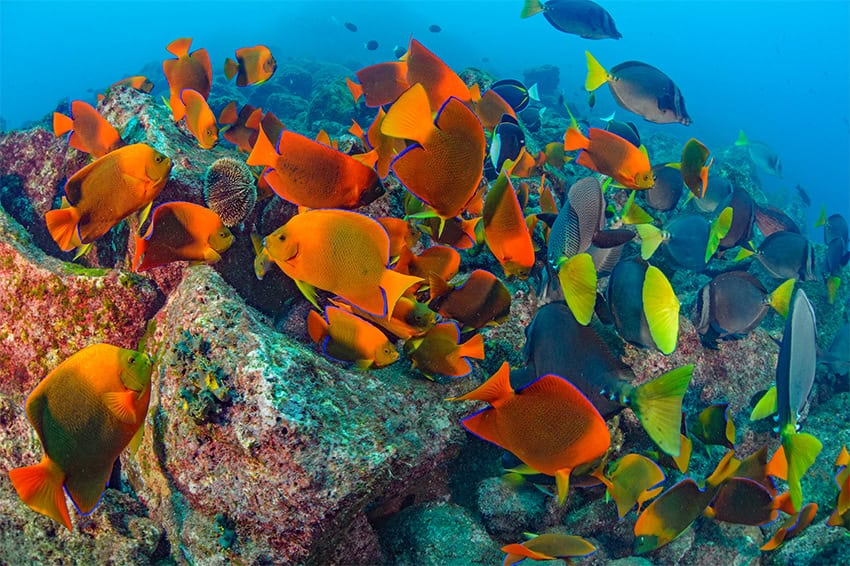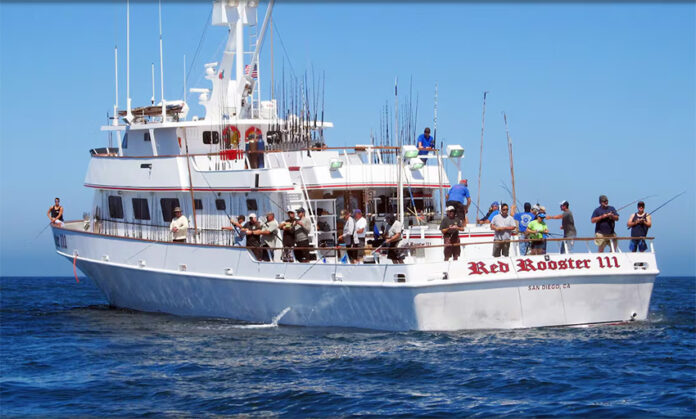Mexico’s ability to defend its marine sanctuaries is being put to the test in Revillagigedo National Park, the largest marine protected area in North America.
According to a report from Mexico’s National Commission of Natural Protected Areas (Conanp), a U.S.-flagged sportfishing vessel has entered the massive, 14.8-million hectare, no-take biodiversity zone multiple times since 2017.

The most recent expeditions occurred in January and March, according to satellite data collected by Conanp.
The area is in the eastern Pacific Ocean, about 390 kilometers southwest of the southern tip of the Baja California Peninsula and approximately 720 to 970 kilometers west of the Mexican mainland.
Conanp said that the fishing boat Red Rooster III — operated by San Diego-based Lee Palm Sportfishers, according to the newspaper El País — entered the park near Clarión Island, one of four islands in the area.
The vessel traveled at 4 to 7 knots, a speed consistent with fishing, and displayed zigzagging movements generally associated with tuna and wahoo (ono) fishing.
“This activity is completely prohibited in Revillagigedo, and it wouldn’t be the only irregularity this vessel has committed,” Fabio Favoretto, a Scripps Institution of Oceanography analyst involved in monitoring, told El País.
Social media posts from the vessel’s January trip showed crew posing with freshly caught tuna, further supporting the allegations.
Historically, the area in question was known as the Revillagigedo Archipelago Biosphere Reserve after Mexico designated it a biosphere reserve in 1994. In 2016, it was declared a UNESCO World Heritage natural site, and a year later, Mexico expanded its protections and declared it a national park — which stood as the last such designation until two years ago.
The area’s four volcanic islands are uninhabited except for two small naval bases and are accessible only by sea, typically from Cabo San Lucas, Baja California Sur, or Manzanillo, Colima.
Often described as the crown jewel of Mexico’s marine conservation efforts, Revillagigedo offers sanctuary to the continent’s greatest concentration of tropical marine megafauna and is sometimes called “the Galápagos of Mexico.”
The area offers critical refuge, spawning grounds and migratory routes to a remarkable variety of marine species, including humpback whales, manta rays, dolphins, hammerheads and other types of sharks, yellowfin tuna, and other game and table fish.

Studies cited by conservationists indicate that such protected areas can boost adjacent fisheries by 12% to 18% through population spillover. Yet the park’s remote location and vast size make enforcement challenging.
Mexican tour operators are regulated by sustainable wildlife-watching practices when they visit the area, which has increasingly become a mecca for scuba divers.
In 2023, a trip there was chosen by National Geographic’s as one of its top five “adrenaline-pumping adventures.”
Conanp collected its data using the open-access Global Fishing Watch and the A.I.-enhanced Skylight, two advanced digital platforms that monitor and analyze vessel activity at sea, particularly to combat illegal, unreported and unregulated fishing.
Conanp said it documented at least eight unauthorized entries by the Red Rooster III since 2017.
Despite submitting evidence to Mexico’s Federal Attorney General for Environmental Protection (Profepa) and the Navy (SEMAR), no sanctions have been imposed, El País reported.

Profepa has declined to comment, while SEMAR stated it “does not have any other type of information” beyond satellite alerts. Meanwhile, Conanp officials lament systemic gaps.
“We must act in accordance with international law, but what’s the point of protecting an area by decree if the law isn’t respected?” Benito Bermúdez, Conanp’s regional director, asked in El País.
A 2018 case involving a tourist vessel near Clarión Island ended without penalties despite evidence, highlighting recurring accountability issues.
“There’s no point in having technologies if the legal framework isn’t there,” Favoretto complained.
Experts, meanwhile, urge stronger interagency coordination, swifter legal action and transparency through platforms like Global Fishing Watch, which allow public tracking of vessel movements.
Moreover, Mexico’s government has pledged to update regulations and leverage international partnerships to address jurisdictional complexities involving foreign vessels, according to the El País report.
With reports from El País, Latin American Post and Telemax
